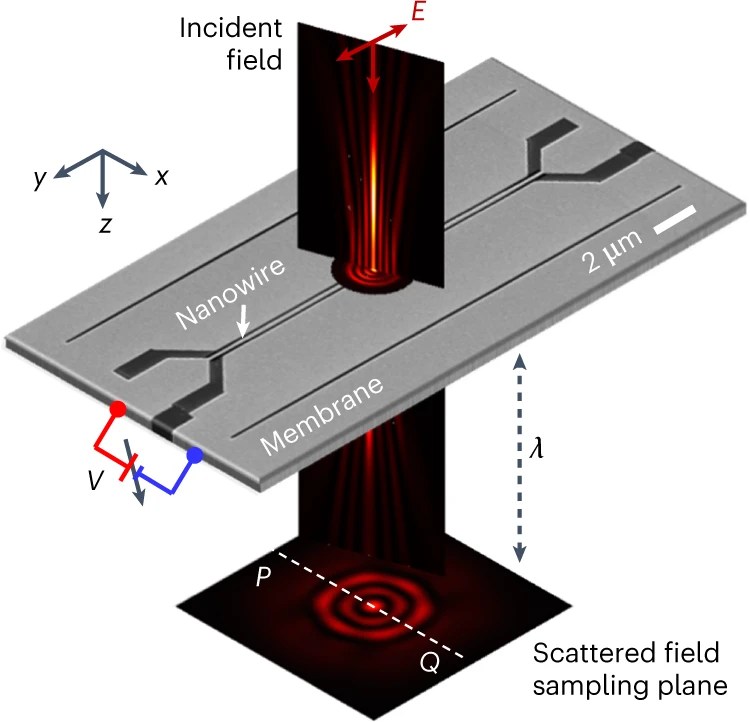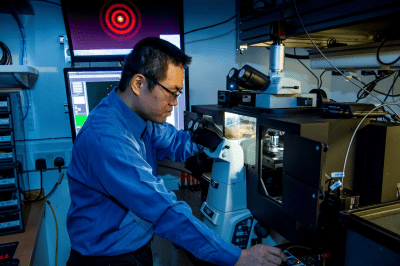Optically levitated multiple nanoparticles have emerged as a platform for studying complex fundamental physics such as non-equilibrium phenomena, quantum entanglement, and light-matter interaction, which could be applied for sensing weak forces and torques with high sensitivity and accuracy. An optical trapping landscape of increased complexity is needed to engineer the interaction between levitated particles beyond the single harmonic trap. However, existing platforms based on spatial light modulators for studying interactions between levitated particles suffered from low efficiency, instability at focal points, the complexity of optical systems, and the scalability for sensing applications. Here, we experimentally demonstrated that a metasurface that forms two diffraction-limited focal points with a high numerical aperture (∼0.9) and high efficiency (31 %) can generate tunable optical potential wells without any intensity fluctuations. A bistable potential and double potential wells were observed in the experiment by varying the focal points’ distance, and two nanoparticles were levitated in double potential wells for hours, which could be used for investigating the levitated particles’ nonlinear dynamics, thermal dynamics, and optical binding. This would pave the way for scaling the number of levitated optomechanical devices or realizing paralleled levitated sensors.
Ref:
Tunable on-chip optical traps for levitating particles based on single-layer metasurface
C. Sun, H. Pi, K. S. Kiang, T. S. Georgescu, J. Y. Ou*, H. Ulbricht, J. Yan*
Nanophotonics (2024) published online DoI:10.1515/nanoph-2023-0873




